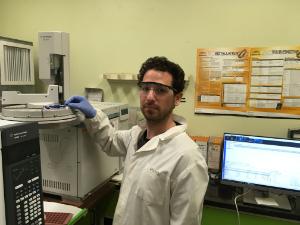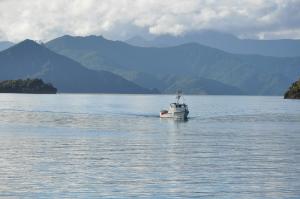Summary of Research Contributions
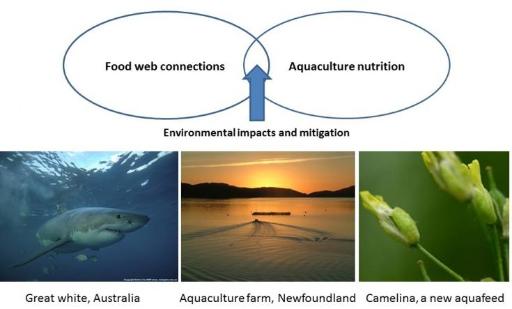
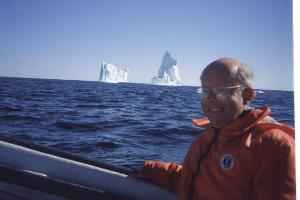
Together with many students in Environmental Science and Aquaculture and the departments of Biology, Chemistry and Biochemistry, we have been looking at marine ecosystems and aquaculture nutrition as well as where these two themes interact in terms of the impacts of aquaculture on the environment. In order to do this work we have also developed analytical techniques that allow us to determine the various classes of lipids and their component compounds.
We have examined the production of lipids, which provide the densest form of energy, in bays around Newfoundland and Labrador, as well as of lipid compounds which are essential for normal growth and development of marine organisms. These compounds include essential fatty acids such as omega-3 fatty acids and sterols. The sub-polar oceanographic climate zone where we sample is an area of particular interest for work with marine lipids. We observed that there were high inputs of lipids during shortperiods especially in spring and that this material seems to be very efficiently used by marine organisms.
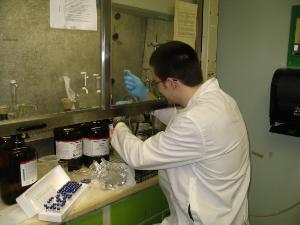
In tandem with these field experiments we discovered critical ratios of essential fatty acids that are needed for growth of early life stages of various species of cold water finfish and shellfish. These lab experiments help us interpret our field data and are important for the aquaculture industry. We have also developed the use of fatty acids and sterols as biomarkers in cold water environments, allowing us to trace the flow of marine, terrestrial and anthropogenic compounds in particles ranging from colloids to those that settle quickly. Our results indicate that land-derived contaminants could easily become widely dispersed in this system. By examining many of the same compounds in sediment cores we have even been able to look into the past. Our data indicate the base of the local ecosystem was functioning in a similar manner now and before the groundfish fishery was at its height.
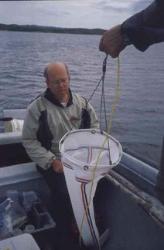
Working with colleagues in France and in Halifax we also looked at the production of biomarkers and potentially toxic fatty acids in toxic algae species. More recently we have been working on the environmental effects of aquaculture and methods for their remediation. We have studied the particle field associated with finfish aquaculture and how benthic organisms interact with it near cage sites and in land-based facilities. We have shown that mussels ingest wastes being generated from aquaculture sites, and that the fraction that is removed is that which has the greatest potential to spread. This broad multi-disciplinary approach to the study of food webs, fish nutrition and aquaculture impacts led to truly interdisciplinary collaborations which culminated in my co-editing a book on food security and co-authoring three chapters in it.
More recently we have examined the spatial variation in fatty acid trophic markers in tuna with colleagues in Hobart, Australia in order to identify signals of ‘tropicalization’. Signature fatty acids were used to explore trophic variations in albacore and skipjack tuna sampled from the southwestern Pacific Ocean. There were clear spatial differences in fatty acid profiles between albacore sampled in the Coral and Tasman Seas; however, few differences were observed in fatty acid profiles of albacore sampled off Tasmania and New Zealand. The changes were likely due to differences at the base of the food web in the Tasman and Coral Seas suggesting that signature fatty acids can be used as indicators of ecosystem change.
Current Research Projects
Production, transport, fate and effects of lipids in the marine environment
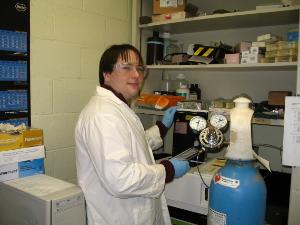 This study is all about taking it to the next level in marine food web research, both in terms of what we are studying and how we are doing it. Aquatic ecosystems occupy the largest part of the biosphere, and lipids in those systems provide the densest form of energy. Lipid dynamics can also strongly influence pollutant accumulation in marine food webs. Among the lipids, certain essential fatty acids and sterols are considered to be drivers of ecosystem health and stability. This study is a continuation of our ongoing program to investigate the importance of lipids in marine organisms and the cycling of these carbon-rich compounds in coastal ecosystems
This study is all about taking it to the next level in marine food web research, both in terms of what we are studying and how we are doing it. Aquatic ecosystems occupy the largest part of the biosphere, and lipids in those systems provide the densest form of energy. Lipid dynamics can also strongly influence pollutant accumulation in marine food webs. Among the lipids, certain essential fatty acids and sterols are considered to be drivers of ecosystem health and stability. This study is a continuation of our ongoing program to investigate the importance of lipids in marine organisms and the cycling of these carbon-rich compounds in coastal ecosystems
Development of replacements for fish meal and oil in diets for cod, salmon, tilapia, walleye and trout aquaculture
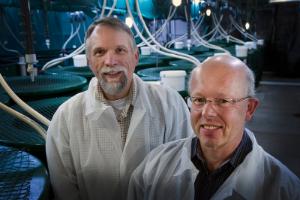
Aquaculture is the fastest growing food production sector in the world, supplying over half of the worlds’ increasing seafood consumption. Feeds are the major cost for aquaculture production and the aquaculture industry is now by far the foremost user of fishmeal and fish oil which is in limited supply. This has led to a search for sustainable alternatives to forage fish in feeds, and we have been investigating their replacement over the past decade. We have shown the effects of minimizing marine ingredients on growth performance and biochemical composition of Atlantic cod, Atlantic salmon, steelhead trout, tilapia, and walleye. We have established minimal levels of marine resource utilization, and maximal levels of animal by-product and vegetable oil inclusion. We have evaluated marine ingredient replacement with a wide variety of oils (camelina, flaxseed, rapeseed, sunflower, and microbial) and meals (camelina, microalgae, and microbial).
Camelina sativa is an ancient crop which has received renewed interest among agriculture researchers in Canada and elsewhere because of several unique and positive agronomic attributes. This study has determined the effect of dietary substitution of fish meal and fish oil on growth performance, feed utilization and biochemical composition in coldwater marine fish.
Nutritional and biomarker lipids in marine food webs
